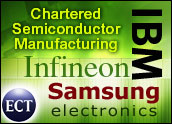
The semiconductor industry has become inflated with hundreds of vendors competing in a crowded marketplace. However, within 10 years, 40 percent of today’s semiconductor vendors are likely to leave the industry, according to new research from Gartner.
Gartner analysts have identified five trends that the firm believes will lead to significant changes in the industry. These trends include increasing device integration, the increasing scale and size of manufacturing, the shift from business to consumer markets, the increasing role of service providers, and new and disruptive technologies.
Device Integration
Increasing device integration is the first and most fundamental of the trends, according to the analyst firm. Device integration will offer benefits in terms of increased chip speed, lower power dissipation, greater functionality per chip, lower system cost and physically smaller equipment.
“Increasing costs and complexity of design, increased system content and greater flexibility means fewer vendors will have the capability to supply chips in the future,” said Jim Tully, vice president and chief of research for Gartner’s emerging technologies and semiconductor group.
“The number of semiconductor vendors has risen steadily from about 120 vendors in the mid-1980s, to roughly 550 in 2003. Within 10 years, the industry will experience significant consolidation.”
Manufacturing Costs
The second major trend identified by the research firm concerns the increasing costs and scale of semiconductor manufacturing. Fabrication plants are becoming extremely expensive, and next-generation “fabs” will inevitably become too expensive for most existing companies.
“To survive, large and costly fabs will need to achieve significant economies of scale, and they will require high volumes of chip production, preferably standard chips that can be produced in a standardized environment with large batch sizes. These standard chips will then be customized after manufacture for specific applications,” Tully said.
“This will result in fewer chip manufacturers in the future, but it won’t result in higher chip prices because the industry is capital-intensive and is highly competitive.”
Consumer Markets
The third major trend relates to the growing importance of consumer markets.
By 2013, more than 50 percent of chip sales will be for equipment markets targeted at consumers. One of the challenges for vendors, according to Gartner, is that the consumer market can be unpredictable because of fashion or fads, so it can be hard to identify what consumers will want.
“Consumer markets are normally high volume and the overall market size is large,” Tully said.
“However, margins on consumer products are very low and the value of individual product categories can be surprisingly small,” he said. “The falling number of chips per application, because of integration, is playing its part in dampening the growth in these applications.”
Service Provider Role
In the past, many semiconductor products were stand-alone. However, according to Gartner, the industry must prepare for the increasing role of service providers. Increasingly, large numbers of equipment are being interconnected — both over the Internet and through LANs — to make them accessible to companies offering upgrades, content and other services.
“These services can generate far more revenue than equipment sales revenue and will dominate many sectors,” Tully said. “Service providers are likely to assume an important and dominant role in electronics. In many cases, these providers are likely to brand the equipment and to control the design and manufacturing of electronic equipment.”
New Technologies
New technologies have driven the semiconductor industry from the beginning, and new technologies will continue to drive the industry.
Most of these have been incremental technology developments. However, disruptive technologies will have a significant and unpredictable effect on the industry, said Gartner.
Examples of disruptive technologies include inkjet processes, light-emitting polymers, carbon nanotubes, molecular transistors and protein-DNA logic.





















































